
Volume XIV, Issue XII
Josiah
By Bob Kirchman
Copyright © 2018, The Kirchman Studio, all rights reserved
Chapter 12: Build a Bridge!
Hannah brought out the coffee for the young man who had just arrived at the Zimmerman Organization Headquarters in Wales. In true form to the local traditions, Josiah poured her a cup, then one for himself. It honored Zimmerman’s Mother who was an engineer in that formerly male dominated profession decades ago. Rupert Zimmerman had insisted the practice continue as a memorial to her. In fact, the culture of the bridge now contained many such nods to those who had paved the way. Josiah had laughed at them in his youth, but now he had come to learn that they were rooted most of all in a sense of reverence for the Divine, who made families and gave wisdom to be passed from generation to generation.
Soon they were joined by Alan West, Flight Director for Cape Lisbon, Rupert’s Granddaughter, Chief Engineer of the Zimmerman Organization, Elizabeth Zimmerman O’Malley, CEO, Abiyah Ben-Gurion and Jon Greene, Professors of the College on Big Diomede.
Mrs. O’Malley began, “My Father devoted his life to making a way for mankind to go where we’d never been before. He considered himself most blessed that he lived to see the things he did. But he always felt a responsibility to those he felt he’d recklessly lead there. It is in that spirit that I have called us together. That drive led us to go to another world and now there are people living there in some confusion. We do not want to send ‘Great Northern’ back there – we don’t even think it is wise, but we’d like to reach out to the colonists and try to help them.”
West offered, “We could continue to supply them remotely with unmanned landers. Eventually they’d have enough landers that some of them could return to Earth, if they so desired. But it is painfully obvious that they feel alienated from us – and our traditions. We feel a human touch would do much to ‘build a bridge,’ if you get my drift.”
Greene observed, “Ray Bradbury once wrote about a similar scenario. Earth is destroyed in a nuclear war but a family takes a rocket on a "fishing trip" to Mars and they escape destruction. They destroy all artifacts of their old ‘misguided’ life. Later, the father offers his sons a gift in the form of their new world. He introduces them to Martians—their own reflections in a canal. That is what we have here. You once said you wished for an unreached world to reach. May I introduce to you the Martians?”
West interjected “It would mean nine months in a fairly cramped environment. There is some risk in any spaceflight and we plan to send a crew of three. There would be no guarantee as to how the colonists would respond when you landed. It seems there are several factions and they disagree on things sharply.”
Josiah’s mind wandered to the story of Nathanael "Nate" Saint, who along with four other men, Jim Elliot, Ed McCully, Pete Fleming, and Roger Youderian, sought to establish communication with the warlike Huaorani of Ecuador. They set out in a little yellow Piper PA-14 and landed on a beach of the Curaray River. Though the Huaorani had enthusiastically received gifts lowered in a bucket from the plane earlier, they murdered the five men with spears on January 8, 1958.
Though the men were armed, they did not want to kill any Huaorani and they did not use their weapons. West said “I think it prudent to give you some means of protecting yourselves, but I cannot guarantee anyone’s safety at this point. We could continue to send supplies by unmanned craft, but I think they need to see us as more than that, if you know what I mean.”
(to be continued) [read more]
A Floral Legacy
The Springhill Hollyhocks
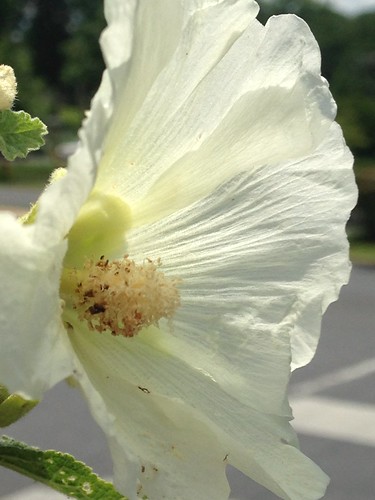
White Hollyhock, Springhill Road. Photo by Bob Kirchman
Everyone must leave something behind when he dies, my grandfather said. A child or a book or a painting or a house or a wall built or a pair of shoes made. Or a garden planted. Something your hand touched some way so your soul has somewhere to go when you die, and when people look at that tree or that flower you planted, you're there. It doesn't matter what you do, he said, so long as you change something from the way it was before you touched it into something that's like you after you take your hands away. The difference between the man who just cuts lawns and a real gardener is in the touching, he said. The lawn-cutter might just as well not have been there at all; the gardener will be there a lifetime." – Ray Bradbury, Fahrenheit 451
Passing something along to the generations to follow... a worthy ambition, indeed the great feast of Passover and the celebration of Purim involve the passing down of the great stories of Redemption! "And ye shall observe this thing for an ordinance to thee and to thy sons for ever. And it shall come to pass, when ye be come to the land which the Lord will give you, according as he hath promised, that ye shall keep this service. And it shall come to pass, when your children shall say unto you, What mean ye by this service? That ye shall say, It is the sacrifice of the Lord's passover, who passed over the houses of the children of Israel in Egypt, when he smote the Egyptians, and delivered our houses. And the people bowed the head and worshipped." -- Exodus 12:24-27
The coming celebration of Passover is a way of keeping the story alive. For generations this story told as a meal has given new generations the cherished history of their redemption. Indeed it should serve as a model for us as we pass down a Legacy of faith to our children. Historically we have passed along so much more to our children as we would teach them how to work, how to build a life and so much more. Of late our society has built a reliance on 'experts' to prepare our young people for the future. While I would readily agree that a young person becoming a doctor needs to be trained by other doctors, there is much to be learned outside of the academy from the proceeding generations of one's own family. Most of our work ethic and our character is formed in the home. There is much wisdom of a deeper sort to be found there.
Indeed, modern generations seem to have diminished the importance of this tradition, as referenced here in some of my writing: "Haroset, bitter herbs and young lamb mingled together to add illustration to an old story. In ancient times a covenant was often made within the context of a meal. Rupert's own redemptive story was now unmistakably flavored by sweet tea and macaroni and cheese. In the 1950's the American company Swanson created an invention known as the "TV Dinner." Families no longer conversed around the table, often "watching the news" instead of passing truth from generation to generation. Food was placed into individual compartments in a small aluminum tray, individualized for each diner. There were no more passed dishes. The family ate in silence as the television did all the talking."[1.]
That is why I love Mrs. Landes' Hollyhocks. They represent the passing down of a gift to bless many generations to come. The house is gone now, replaced by a gas station, but the Great-great grandchildren of Mrs. Landes still enjoy the fact that they still bloom every year where her house once stood and that is a wonderful thing!
I first noticed the wonderful hollyhocks as I would drive over to my weekend job with organ builder Xaver Wilhelmy. There they were growing in the highway right of way. I started photographing them, marveling at their tenacity in growing where they did. One day I mentioned them to my assistant Kristina, who surprised me by telling me that her Great-great Grandmother had first planted them. They too would find their way into story: "The hollyhocks were in bloom now, and their offspring, lovingly sown from Kris' pods, blessed many a neighboring garden in the biosphere which protected the little town from the ravages of the severe climate. Today, the little gardens seemed especially alive as hummingbirds and butterflies seemed to abound. "Why does this day seem so different from any other?" mused Kris. Surely it had to be the special visit from Kate and Elizabeth. No, the light seemed more brilliant. The flowers seemed more defined. An artist noticed things like this, and each of these women was an artist in her own right." [2.]
The statement: "Why does this day seem so different from any other?" alludes to the Seder by design, referring to the child's question which prefaces the great retelling of the great story of redemption. Projecting the great story into the future is a direct reference to the hope we have in our own promised redemption! Indeed that hope is at the heart of the celebration of Redemption and resurrection!
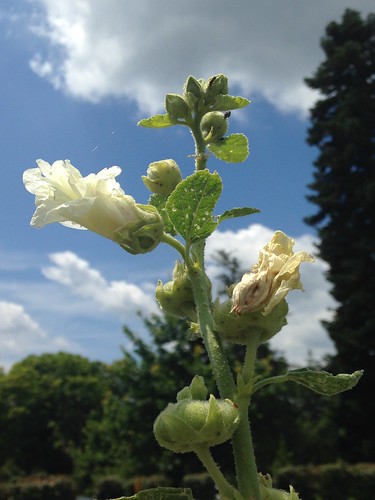
White Hollyhock, Springhill Road. Photo by Bob Kirchman
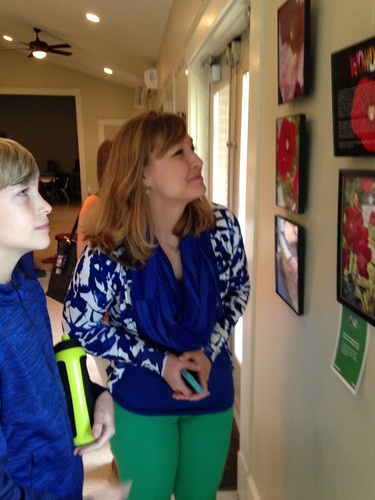
The Great-great Grandchildren of Mrs. Landes and the story of her legacy of hollyhocks. Her hollyhocks still bloom every Summer on Springhill Road in Staunton, Virginia. Her house is long gone, replaced by a gas station but the flowers continue to bless those who pass that way. They were the inspiration for the mural: Heavenly Hollyhocks that Mr. Kirchman painted in Charlottesville, Virginia.

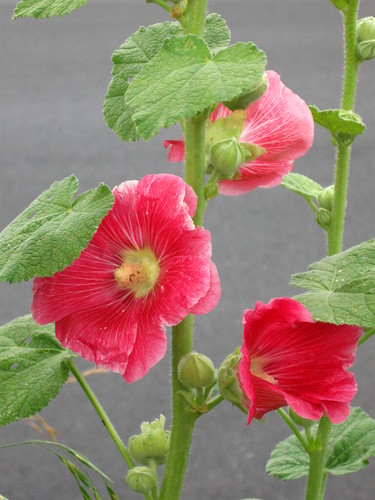

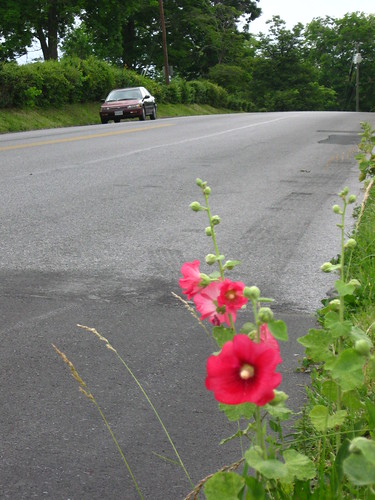
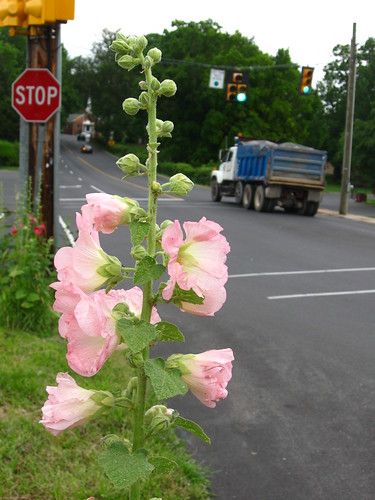
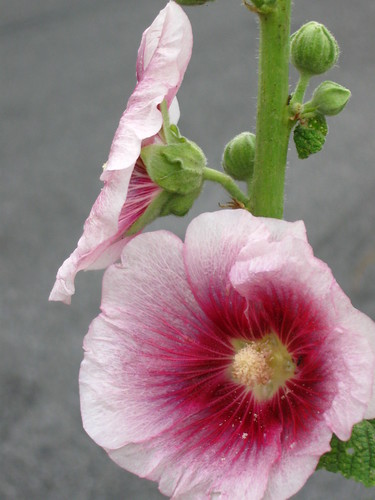

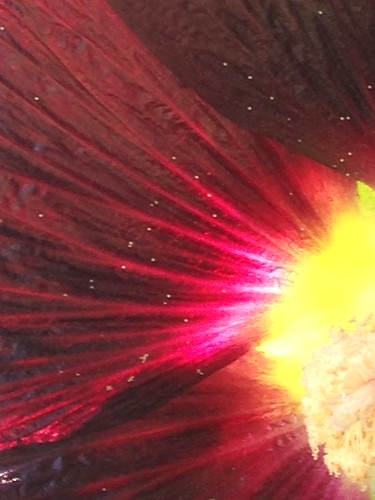
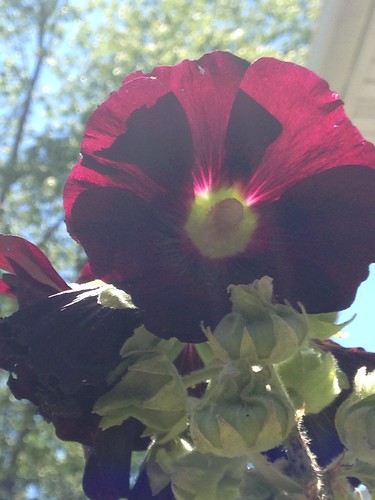
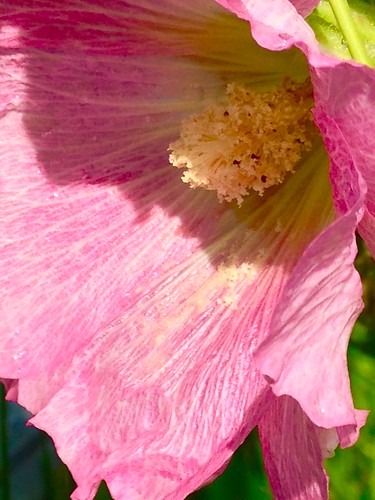
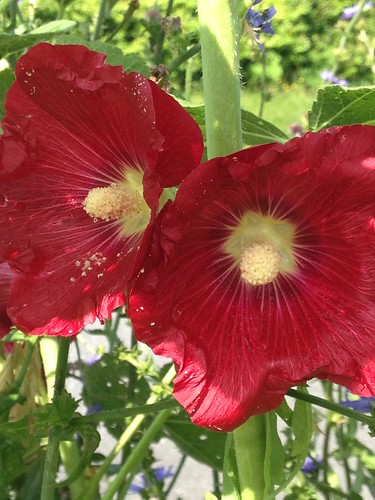
Every Summer they appear!, remnants of a garden planted long ago that continue to brighten the drive into Staunton along Churchville Avenue. What a great living legacy for a gardener!Photos by Bob Kirchman
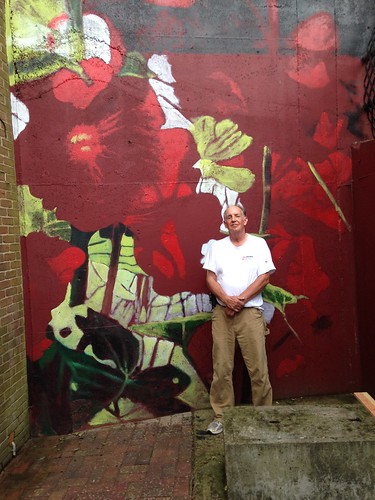
Mural inspired by the Springhill Hollyhocks.
Joseph Bryan Park Azaleas
Richmond, Virginia
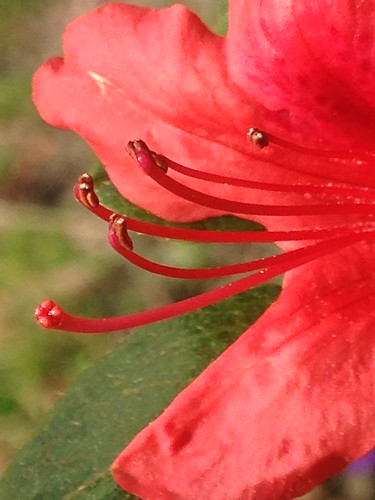
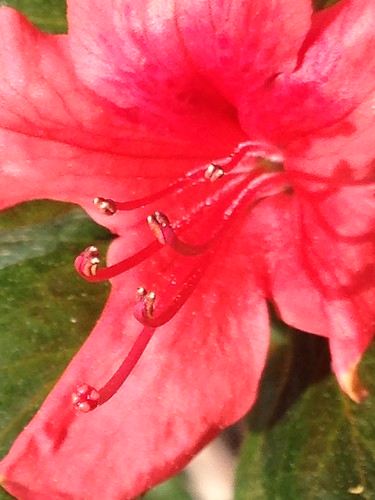
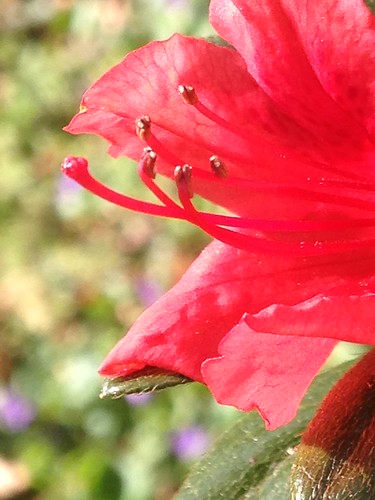
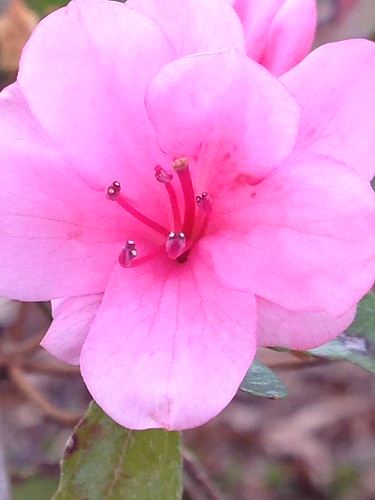
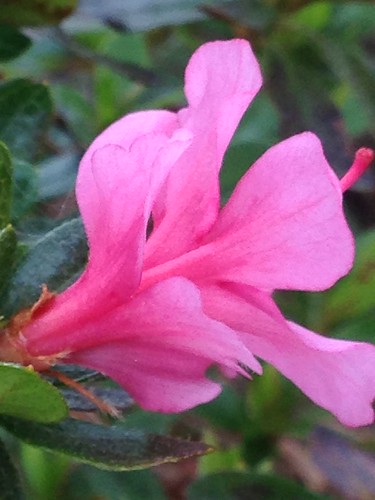
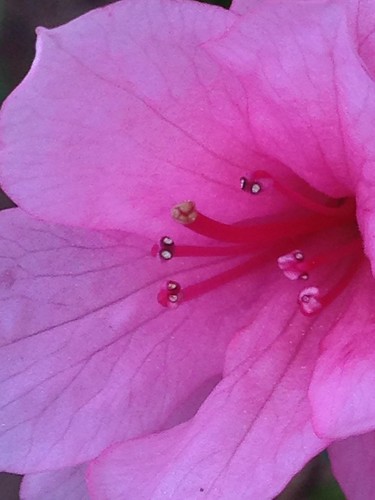
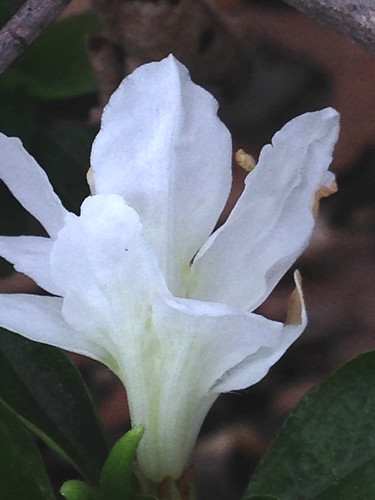
Photos by Bob Kirchman.
The Azalea Garden
[click to read]
The Azalea Garden was started in 1952 by Mr. Robert E. Harvey, a former Richmond Recreation and Parks Superintendent of Grounds and Structures. Over an almost fifteen-year span, Mr. Harvey, helpers from the City, Garden Clubs and volunteers planted 450,000 azaleas (50 different varieties) in approximately 76 separate beds. They also built a small pond with a stone fountain, and planted a large red and white cross made of azaleas, framed by boxwoods started from slips from boxwoods at Dogwood Dell. Eventually, these 17 acres of Bryan Park would be recognized as a major tourist attraction (and money generator), bringing 450,000 visitors per year to Bryan Park.
Unfortunately as Richmond, like many cities across the United States, came under financial strain, the Azalea Garden fell into disrepair. Efforts are slowly being made to bring it back to its former glory. (read more)
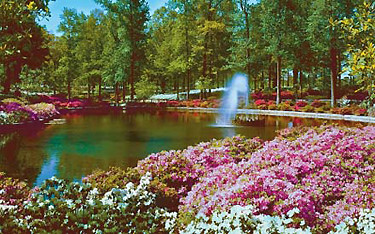
The Bryan Park Azalea Garden at the height of its glory.
Friends of Bryan Park.
Azalea Dew
Photo by Bob Kirchman
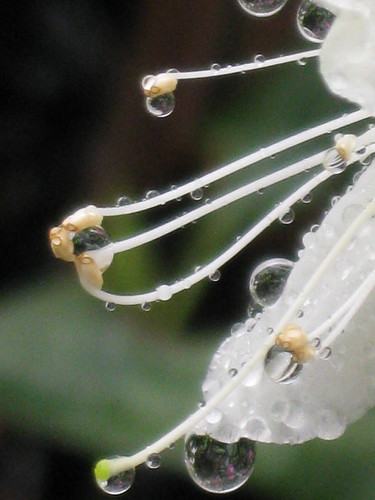
Drops on an azalea blossom create a vision of a magical world.
Photo by Bob Kirchman.
Public Service as a Holy Calling
The Life of William Wilberforce
Is it not the great end of religion, and, in particular, the glory of Christianity, to extinguish the malignant passions; to curb the violence, to control the appetites, and to smooth the asperities of man; to make us compassionate and kind, and forgiving one to another; to make us good husbands, good fathers, good friends; and to render us active and useful in the discharge of the relative social and civil duties?” – William Wilberforce
Men of authority and influence may promote good morals. Let them in their several stations encourage virtue . . . let them favor and take part in any plans which may be formed for the advancement of morality.” – William Wilberforce
It is indeed a most lamentable consequence of the practice of regarding religion as a compilation of statutes, and not as an internal principle, that it soon comes to be considered as being conversant about external actions rather than about habits of mind. This sentiment sometimes has even the hardiness to insinuate and maintain itself under the guise of extraordinary concern for practical religion; but it soon discovers the falsehood of this pretension, and betrays its real nature. The expedient, indeed, of attaining to superiority in practice by not wasting any of the attention on the internal principles from which alone practice can flow, is about as reasonable, and will answer about as well, as the economy of an architect who should account it mere prodigality to expend any of his materials in laying foundation, from an idea that they might be more usefully applied to the raising of the superstructure. We know what would be the fate of such an edifice.” – William Wilberforce
One often hears a nostalgic reference to “the Good Old Days” referring to times when culture seemed more civil, art was more uplifting and the times themselves had a more positive spirit. We do well to remember that these times of refreshment in a national culture are indeed the work of people like Wilberforce, who acted out of what had happened in their own spirit. They are often countered by an argument from those who desire a secular morality that “the good old days were not so good.” Indeed they can point to the fact that people would ostensibly be churchgoing but would still support slavery and such. Indeed one needs to look deeper to see that a Christianity that had a deeper hold on her practitioners was what eventually toppled slavery. In his book Under the Influence, [2.] Alvin Schmidt presents solid evidence of “How Christianity Changed the World.” One might be tempted to dismiss this work, in spite of all the evidence, as merely a tract to promote Faith, but consider the arguments of Dr. Theodore Dalrymple, an avowed atheist, who wrote the book Our Culture, What’s Left of It. [3.] Dalrymple, seeking reasons for the decline of Britain’s culture, finds like Schmidt that “Religion can be a force for good.” As Christianity has declined in Britain, so has the morality and overall state of the nation. Here Wilberforce’s thoughts on foundations apply. It is not enough to reinstate a ‘civil morality’ through preaching the law without its underlying spirit. The message of Jesus Christ cuts to the heart of man, addressing the sin itself, that’s effects are degradation and destruction.
Lovely flowers are the smiles of God's goodness.” -- William Wilberforce
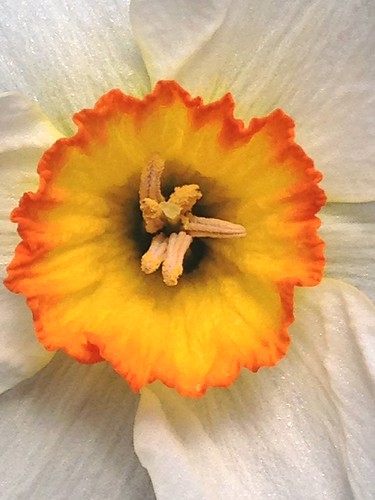
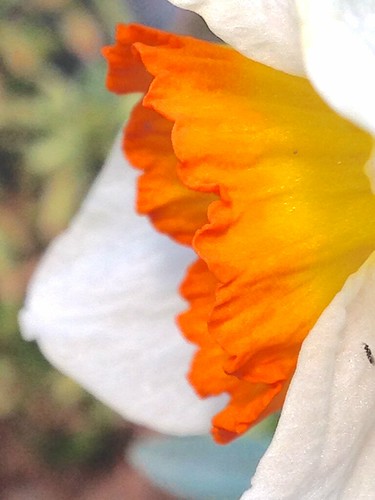
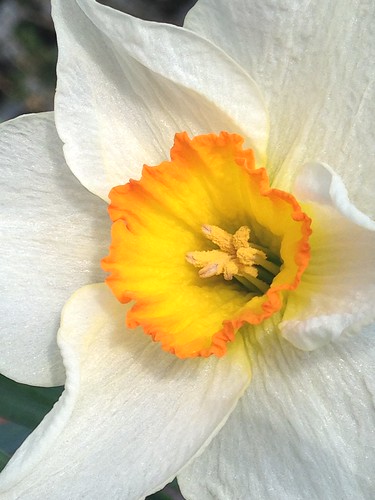
Jonquil. Photos by Bob Kirchman
The Two Voices
Reflections on Faith
[click to read]
In the movie: “The Longest Day,” which tells the story of Operation Overlord, the D-Day invasion of Normandy, John Wayne plays Lt. Col. Benjamin Vandervoort, commander of the 89th Division. There is a moment when he comes upon a road sign pointing out the direction to St. Mere Eglise, their objective. His men have already dutifully began to march in that direction.
Suddenly the General calls out: “Am I the only one in this unit that uses a compass?”
It turns out that the enemy has turned the sign around to lead them the wrong way! Vandervoort orders his men to turn around. He glances toward the sign: “Knock it Down!” he orders. And so we consider the voices that speak to us… offering to direct us, in our own day and time. How do we know which signs are right? What ‘compass’ is there to guide us? Are there signs around us that we should knock down? (read more)
Mountain Maple Blossoms
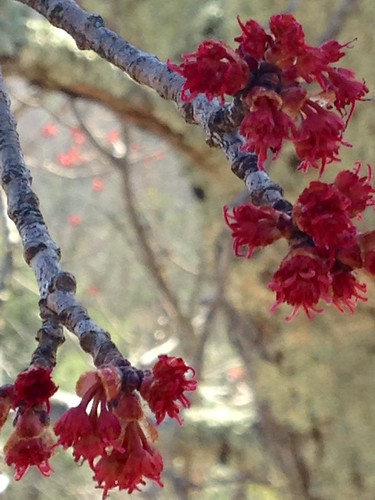
Maple Blossoms in the Blue Ridge Mountains. Photo by Bob Kirchman.
Monet Moments
Photographs by Bob Kirchman
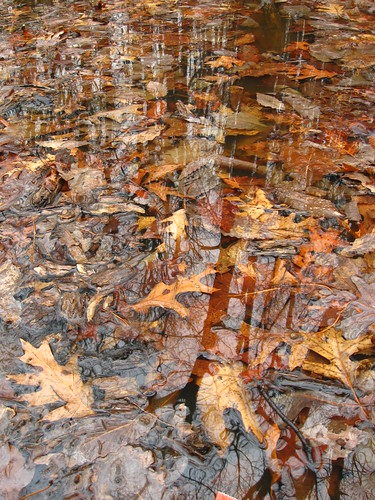
Mary Gray Mountain, Staunton, Virginia. Photo by Bob Kirchman.
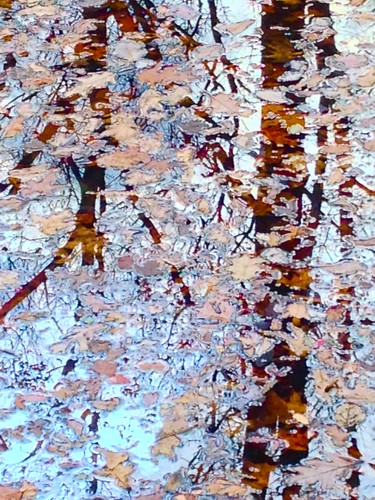
Sherando Lake, Augusta County, Virginia. Photo by Bob Kirchman.
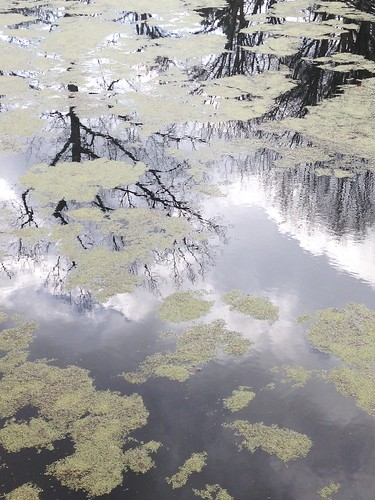
Joseph Bryan Park, Richmond, Virginia. Photo by Bob Kirchman.
A Capital Vision II
Harry Weese's Metro Design

Harry Weese's 1967 Model of a Typical Station.

WMATA General Manager Jackson Graham long resisted adding elevators to Metro stations, arguing that the small numbers of wheelchair users projected to use the system could not justify the expense. When a lawsuit finally forced WMATA to make stations wheelchair-accessable, elevators had to be shoehorned into existing station designs. 1972 Drawing by Harry Weese Associates.
Chicago Historical Society CHS.



The Bus Bay: A 1970's Utilidor.
The space was a challenging one. While Harry Weese’s urban Metro stations transition smoothly, the Bethesda station awkwardly connects to a private development area through an underground bus bay. While the space is efficient, it is not very welcoming. A fountain cascading into the subterranean realm attempts to bring light and movement with it.

1966 Sketch by Harry Weese.
In the 1966 sketch by Weese (above) it is clear that the architect desired your journey into and out of the crypt to flow directly into and out of a park-like setting. His notes on the escalator read: “Rise Directly to Surface.” “Open Directly to the Sky.” “Emerge in a Park.” Though the exigencies of fare-paying and deep tunnels would eventually require dark passageways and mezzanines, Weese’s original vision was different. Likewise the elevators seem to surrender to the darkness.
The Bethesda Bus Bay Fountain is a serious nod to Weese's desire to connect the Metro to the surface. That is where the mural competition specifications dictated that the new mural be placed, on a pillar and balustrade that basically framed the fountain. No plans were put forth to improve the space from the fountain escalator to the very long Metro descent escalator. Thirty mural firms competed for the project. Proposals were due mid-Summer with a mid-October completion date specified in the invitation. Clearly, if I won it I would be working some days under tarps on lifts in the unpredictable mid-Atlantic late Summer. Also, there was the requirement that the mural also be painted on a ‘bench’ along the base of the fountain. The sheer amount of painting required in that time-frame was daunting. It is a project I would have loved to have done, especially in the days when I had an assistant. In the end, however, I did breathe a sigh of relief when the call did not come.

Harry Weese's Rendering shows Metro above ground in a park-like setting near Reagan National Airport.
Artist Juan Pineda was chosen to paint Beth-Stela, a colorful geometric design in the station. The vibrant mural presents a contemporary version of Mayan hyroglyphics applied to the bench, columns and balustrade. It is a great mural. There is a bit of controversy over it though as it seems to some observers to be out of character with the Weese Modernist-classicism of Metro itself. This is a worthwhile discussion. Weese’s work is iconic and should be the starting point for any improvements. I do not think, however, that the iconic nature of the stations themselves precludes color and localism – particularly in the suburban stations.
I would love to see Elysian Lilies considered for a future project of this type, but hopefully in a place where residents had a fair amount of input and some design oversight was applied to ensure community satisfaction and consonance with the Weese vision. Perhaps smaller mosaic installations would add color without changing the character of the spaces too much. One needs to remember that today’s wonderful mural can become twenty years from now’s maintenance headache. Paint being fragile, could more permanent art be added that was smaller? Perhaps a good power washing first would be a good idea. Four decades, after all, have left their ‘patina’ on the venerable design. In any case, it was a really great exercise to study the original designs of Weese and attempt to honor them. Harry Weese, I feel, set out to create a Modernist vocabulary that honored the great historic city above it. That is something to celebrate.

Juan Pineda's Mural, Beth-Stela.
Mohomony, Light and Snow
Painting by Bob Kirchman
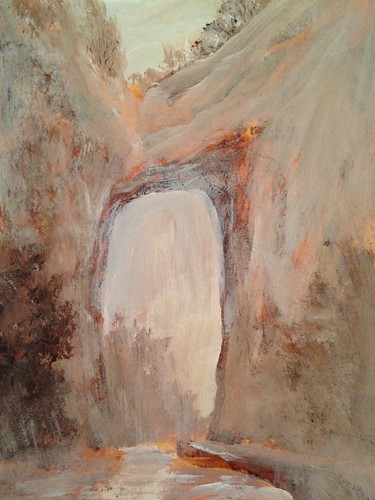
Passing the Torch
The Legacy of Frank Summers
The community of Staunton, Virginia said goodbye to a man who touched many lives this past week. He was a true Virginia Gentleman and a respected professional. He was a scratch golfer, having learned the game while stationed in Hawaii during his Navy days. Most of all, he should be remembered for leaving his community a better place. When the Staunton YMCA experienced financial hard times, he gave them a loan. When better times came and the organization came to him to repay it, he refused, saying it was a donation.
A man who loved the outdoors, his farm and his family, Frank Summers is most remembered by those whose young lives he invested in. They learned to drive in his old Jeep Cherokee and found the richness of farm life in his mentorship. I first met Mr. Summers when my elderly parents-in-law were befriended by him. Discovering a mutual love of golf he reached out to them. His life was truly a “Wonderful Life,” touching so many in our little community. His example is one to cherish and try to emulate.
Evening Light on Elliott Knob
Photo by Bob Kirchman

Around the World in 80 Days














